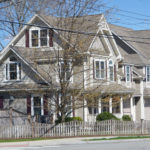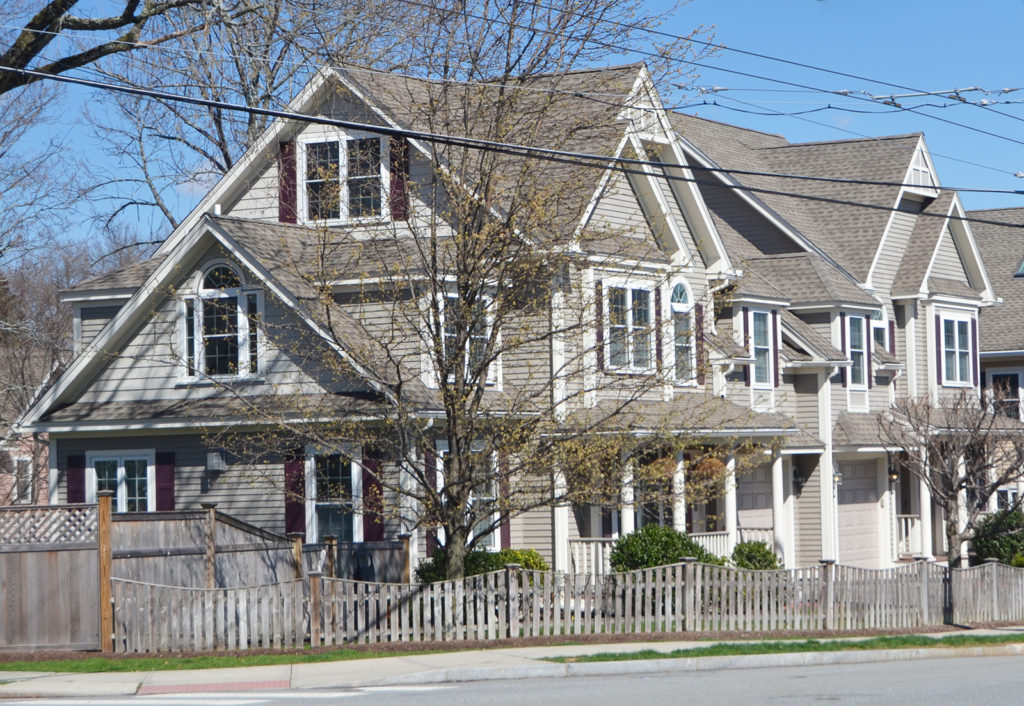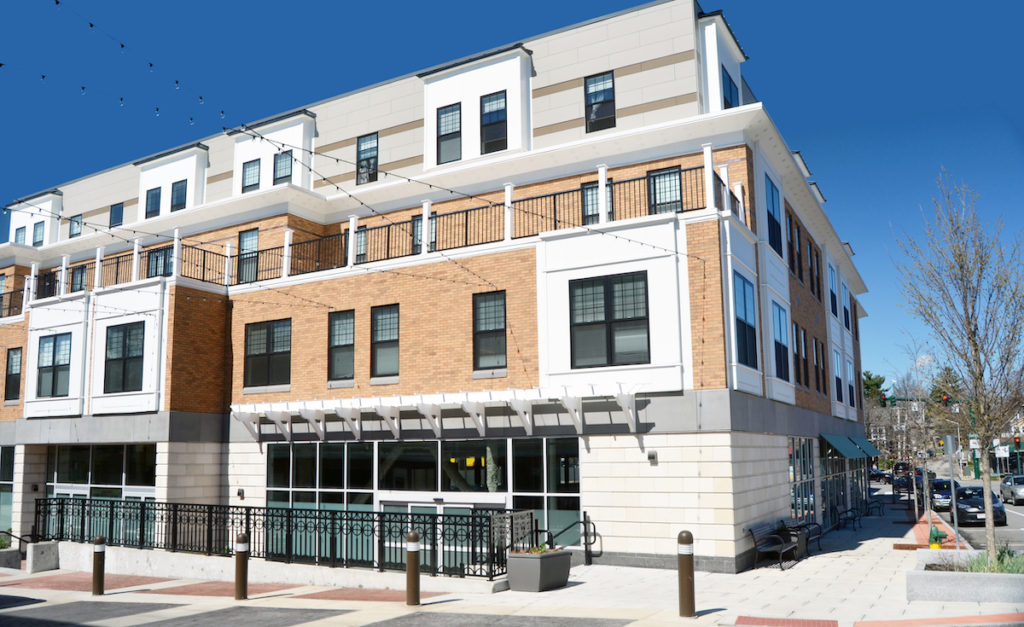
By Tomi Olson and Rachel Heller
Belmont has great schools, restaurants, and local businesses and is located near job centers in Boston, Cambridge, and the MetroWest area. The Boston area’s burgeoning life sciences industry alone is projected to create up to 40,000 new jobs by 2024, but our region’s economic engine is hampered by a lack of housing near jobs—and Belmont’s limited housing supply is part of that problem.
Population growth, together with housing production that hasn’t kept pace, has made housing shortages in appealing parts of the country like ours front-page news. Our region builds much less housing every year than it did in the 1980s, and the supply of new housing is not keeping up with demand.
When housing costs are high, our coworkers, friends, and neighbors can be priced out. This hurts our community and limits our town’s and region’s economic growth. High housing costs limit who can live in our community, whether they are seniors who have lived here for decades or households with lower incomes. Restaurant and grocery store workers, town employees, school bus drivers, home health aides, teachers, nurses—people we count on every day—can no longer afford to live near where they work. More housing near mass transit lowers housing and transportation costs and helps people live closer to where they work. The result: less traffic, fewer carbon emissions, cleaner air, and a more socially and economically diverse community.
To preserve what we love about this great community, we need to allow for more homes in our Town of Homes. Local zoning can accelerate housing production, stabilizing home prices and rents and creating new homes at a range of price points. Zoning is our opportunity to decide what can be built where. Good zoning is important for the health and vitality of Belmont and to ensure that people across income levels can afford to live here.
The good news is that we are making progress! Belmont residents can be proud we adopted a Housing Production Plan in 2018 that set us on a course to expand affordable housing opportunities and to meet a wide range of housing needs. Since 2018, Belmont has:
Strengthened our inclusionary zoning policy so that more affordable homes are built in new developments.
- Approved funding from the Community Preservation Act to provide emergency rental assistance to people financially burdened by the pandemic and to support creating new affordable housing.
- Approved development on the former McLean land for a mix of rentals and home ownership opportunities, including options specifically for seniors and rental homes that are open to a broad range of residents. Overall, 150 new homes will be built, comprising 40 townhomes for ownership and 110 rental apartments. One apartment building will be for seniors; a second building will be open to all households. Twenty percent of the apartments will be affordable to households with moderate incomes, and 5% will be affordable to households with low incomes; 15% of the townhomes will be set aside for seniors with moderate incomes.
- Made progress on reaching the state’s 10% benchmark for affordable housing in each community. Belmont is currently at 6.5%, up from 3.6% in 2017. With the 110 new homes at McLean, the town will potentially achieve a temporary “safe harbor” of one to two years.
Belmont’s Housing Production Plan
Belmont’s 2018 Housing Production Plan told us a lot about our housing needs. We learned that nearly 25% of our residents are eligible for affordable housing, and yet few affordable options exist. Many Belmont residents are considered housing-cost burdened, which means that they pay more than 30% of their incomes for housing; some are severely housing-cost burdened, paying more than 50% of their incomes for housing.
We learned that we don’t have enough homes that are affordable to seniors, families, or for people with extremely low incomes. We also found that we have a great need for more accessible housing.
While we have a lot of needs, we also have a lot of opportunities to meet those needs. Belmont is just beginning to work on our next Housing Production Plan. Each plan spans five years; our current plan expires in May 2023.
The Housing Production Plan process includes analyzing our demographics, housing costs, and needs. This work is vital for understanding if our needs have changed over the last five years and how the pandemic may have changed peoples’ circumstances. The Housing Production Plan process also includes robust community engagement so that we can share information, get ideas for meeting our housing needs, and identify together, as a community, where we have opportunities to expand affordable housing.
Safe Harbors
Chapter 40B is a state law which allows developers to bypass local zoning if they build affordable housing in communities where less than 10% of housing is legally defined as affordable.
State regulations create “safe harbor” options that allow a Zoning Board of Appeals to deny a Chapter 40B proposal without risk of being overturned by the state’s Housing Appeals Committee even if less than 10% of that community’s housing is affordable. A community can gain safe harbor status if it follows state-approved Housing Production Plans and increases its stock of affordable homes.
It is important to note that the Housing Production Plan does not happen in a vacuum. Housing is part of the overall health of our community. Good housing planning is key to advancing many of our community goals including preserving open space; supporting our local businesses; fostering a welcoming and inclusive environment for all residents, employees, and visitors; increasing sustainability; and diversifying our tax base.
More homes near the proposed Belmont Community Path could provide people with a way to get around without driving. More homes, particularly multifamily housing, will create housing at different price points. More housing near transit and commercial corridors will help to preserve precious open space, increase foot traffic for businesses, and reduce the need to drive. This approach also allows for more mixed-use development, which brings in more commercial space that is supported by the homes above it. All of these efforts contribute to vibrant and healthy businesses, which means more commercial revenue for Belmont.
Designing a Healthy, Vibrant Future
The Commonwealth needs 200,000 new homes by 2030 to support our residents and stabilize home prices and rents, according to a 2021 report released by the Baker administration—yet the state is producing half the number of homes per year as 30 years ago. A new state law requires the 175 communities served by the MBTA to zone areas for multifamily housing. The legislature also made it clear that these areas must allow homes that are suitable for all household types, including families with children. The law also states that communities must allow at least 15 units per acre, and that this housing must be within a half mile of transit.
Every community in the Commonwealth needs to put policies in place that allow for the homes we need in order for our communities to stay healthy and for our state to grow. As we all look around amazed at the high housing prices and rents, we must step forward and do something about it.
Governor Baker recently issued draft guidance so that affected cities and towns understand how to comply with this new law. The guidance assigns the number of homes based on their transit options. Given our bus and commuter rail lines, Belmont needs to zone for 2,176 new homes. The guidance requires that Belmont’s zones constitute at least 50 acres of land with half of the area falling within a half mile of transit.
It may be hard to imagine what 15 units an acre would look like. To get a sense, we can look at our current neighborhoods. While Belmont Center has 2.9 homes per acre, Waverley Square has an average of 6.2 units per acre.
Increasing the number of homes per acre does not have to dramatically change what our neighborhoods look like. Homes above businesses in Belmont Center and more mixed-use development, like what we see in Waverley Square, can allow for more diversity in our housing stock and create new opportunities for people to stay in town if they want to downsize or to move from renting to homeownership. Our kids could live here when they are ready to live on their own, and people who work here could have affordable places to live.
In addition to requiring growth, state law already rewards it through Chapter 40R districts. The state’s smart growth law, Chapter 40R, requires that 20% of the homes built within these districts be affordable. It rewards communities that zone for multifamily housing near transit and town centers by paying them a bonus when building permits are approved, and offers insurance so that they are reimbursed if development in 40R districts results in increased school enrollment.
Belmont’s Inclusionary Zoning Bylaw
Inclusionary zoning requires affordable homes be included as a portion of new housing development. In Belmont, for residential developments of 6 to 12 homes, 10% must be affordable; for developments of 13 to 20 homes, 12% must be affordable; and for developments with more than 20 homes, 15% must be affordable.
40R districts could help Belmont surpass the 10% benchmark set in the state’s Chapter 40B law, and meet multiple town goals. Belmont already has one 40R district in place across from the Oakley Country Club. We can use 40R to create mixed use, mixed income developments near our commuter rail stations and along our commercial corridors. Belmont would be able to produce a wide range of housing options for people at different price points, meet more of our affordable housing needs, and hit the state’s 10% benchmark.
Zoning for more housing is one of the best ways that Belmont can contribute positively to our local and regional economic, social, and climate goals. Later this spring, the Belmont Housing Trust will sponsor community discussions about regional housing needs for Belmont’s 2023 Housing Production Plan. How do you think we can best strike that ideal balance where we foster greater housing options to meet local and regional needs while also preserving Belmont’s assets? Information on discussions will be posted by the Housing Trust, www.belmont-ma.gov/housing-trust.
Rachel Heller is co-chair of the Belmont Housing Trust and chief executive officer of Citizens’ Housing and Planning Association. Tomi Olson is a member of the Belmont Housing Trust and served as an elected commissioner of the Belmont Housing Authority.




Sorry, the comment form is closed at this time.